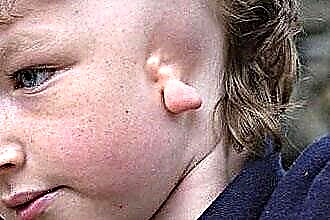The main complications after myocardial infarction
The severity of complications of acute myocardial infarction (AMI) is associated with the degree of impaired coronary blood flow, contractility of the heart muscle and the localization of ischemia. An important role is played by the promptness of medical care, the adequacy of therapy, the presence of concomitant pathology, and the patient's age. A short-term violation of the blood supply causes the death of cells in the subendocardial zone. If the duration of ischemia exceeds 6 hours, necrosis develops in 80% of the affected myocardium.
Development stages:
- The sharpest (first 6 hours).
- Sharp (up to 14 days).
- Subacute (up to 2 months).
- Scarring.
Complications of a heart attack can occur at any stage. This is its danger. Patients who are hospitalized 6-12 hours after the onset of an attack and who have not received thrombolytic therapy or other methods of restoring blood flow are especially at risk. With the development of a complicated heart attack, death can occur within a year.
All complications of AMI can be divided into four blocks:
- Electrical (violation of the rhythm and impulse conduction).
- Mechanical (associated with structural abnormalities in the myocardium).
- Hemodynamic (caused by the functional inability of the affected myocardium to provide the previous blood flow).
- Reactive (associated with resorptive and autoimmune processes, activation of the sympathetic nervous system, as well as secondary dysfunctions of internal organs).
Early
Complications of the acute period of myocardial infarction develop in the first 10 days after the painful attack and do not significantly worsen the prognosis of the disease with timely treatment.
Rhythm and conduction disturbances are the most frequent complications of the acute period of a heart attack (up to 80%). Arrhythmias mainly develop due to changes in the electrophysiological properties and metabolism in the affected area, a decrease in the fibrillation threshold, the release of a large amount of active substances - catecholamines into the bloodstream, and the development of the re-entry phenomenon (circular circulation of the excitation wave in the myocardium).
Clinical and prognostic classification of arrhythmias:
Non-life-threatening:
- sinus arrhythmia, bradycardia (pulse is slow, but> 50), tachycardia (<110 beats / min);
- atrial pacemaker migration;
- rare (<5 per minute) atrial and ventricular extrasystoles;
- passing AV-blockade of the 1st degree.
Prognostically serious:
- sinus tachycardia with pulse> 110 beats / min, bradycardia <50 beats / min;
- frequent atrial, as well as group, polytopic early ventricular extrasystoles (predictors of fibrillation and atrial fibrillation);
- sinoauricular block;
- AV block II-III degrees;
- idioventricular rhythm;
- the rhythm from the AV connection;
- supraventricular paroxysmal tachycardia;
- atrial fibrillation and flutter;
- sick sinus syndrome.
Life-threatening:
- paroxysmal ventricular tachycardia;
- fibrillation, ventricular flutter;
- subnodal complete AV block;
- asystole of the ventricles.
Clinically, rhythm disturbances are manifested:
- palpitations;
- a feeling of interruptions in the work of the heart;
- a drop in blood pressure;
- dizziness, loss of consciousness.
Due to the widespread introduction of thrombolysis at the prehospital stage and emergency myocardial revascularization, the frequency of intraventricular and complete AV blocks does not exceed 5%. Previously, these complications became the cause of death in more than 50% of patients as a consequence of the progression of heart failure and the development of cardiogenic shock.
In case of recurrence of life-threatening rhythm disturbances, a transvenous electrode is installed for temporary stimulation of the myocardium in the mode of demand (on demand). After the resumption of an adequate heartbeat, the device is left until the hemodynamic parameters are completely stabilized (for 7-10 days).
Acute heart failure develops due to impaired function of the left ventricle. It leads to extensive and transmural infarctions complicated by tachyarrhythmia or AV block. The necrotic zone of the myocardium is "turned off" from the contractile mass. When more than 40% of the muscle tissue of the ventricle dies off, cardiogenic shock develops.
A sharp decrease in left ventricular ejection function leads to:
- an increase in the final diastolic blood volume in it;
- an increase in pressure, first in the left atrium, then in the pulmonary veins;
- the development of cardiogenic pulmonary edema;
- insufficient blood supply to vital organs (brain, liver, kidneys, intestines.
Clinically acute heart failure is manifested by:
- progressive shortness of breath;
- tachycardia, decreased blood pressure;
- moist wheezing in the lungs, crepitus;
- cyanosis (blue skin);
- decreased urine output;
- violation of consciousness.
Cardiogenic shock is an extreme degree of left ventricular failure, with a mortality rate exceeding 85%.
Treatment of acute heart failure, cardiogenic shock, and alveolar pulmonary edema should be carried out in an intensive care unit.
Mechanical complications in the early period (heart ruptures). This severe, most often fatal outcome of a heart attack develops 5-7 days after the attack.
Heart breaks are divided into:
- Outdoor. Rupture of the wall of the ventricle in the area of ischemic lesion with outflow of blood into the pericardium.
Allocate the pre-rupture period, which is intense pain, manifestations of shock, and the actual rupture of the wall. At this moment, blood circulation is quickly stopped with signs of clinical death. Sometimes this process can take several days.
Unfortunately, only a small percentage of patients manage to perform an emergency puncture of the pericardium and an urgent operation to restore the integrity of the left ventricle with additional coronary artery bypass grafting.
2. Internal:
- Rupture of the interventricular septum. Occurs with anterior localization of necrosis. The diameter of the defect ranges from 1 to 6 cm. Clinically, this is manifested by an increase in intractable pain, the development of cardiogenic shock, and the appearance of total heart failure in a few hours. Treatment is exclusively surgical.
- Rupture of the papillary muscle. The papillary muscles keep the mitral and tricuspid valves closed during systole, preventing blood from flowing back into the atria. It is completely incompatible with life, since mitral insufficiency and alveolar pulmonary edema develop with lightning speed.
Left ventricular aneurysm. Local swelling of the wall of the left ventricle during diastole. The defect consists of dead or scar tissue and does not participate in contraction, and its cavity is often filled with a parietal thrombus. The condition is dangerous by the development of embolic complications or heart rupture.
Mental disorders. They usually develop in the first week of the disease and are caused by insufficient blood supply to the brain, low oxygen content in it and the influence of decay products of the heart muscle.
Behavioral disorders can occur in the form of psychotic (stupor, delirium, gloomy state) and non-psychotic reactions (asthenia, depression, euphoria, neurosis).
Particular attention should be paid to depressive syndrome (it can cause suicide).
Late
After 10 days after a heart attack, the following may develop:
- Early postinfarction angina pectoris. More often occurs when several coronary vessels are damaged or insufficient thrombolysis, as well as due to impaired diastolic function of the left ventricle. It is a predictor of myocardial infarction recurrence and sudden cardiac death.
- Thromboembolic complications:
- PE (pulmonary embolism);
- bifurcation of the abdominal aorta, arteries of the lower extremities (with the development of gangrene);
- thrombosis of mesenteric vessels (clinical picture of an acute abdomen), renal artery (kidney infarction), cerebral arteries (stroke).
3. Thromboendocarditis. Aseptic endocardial inflammation with parietal thrombus formation in the necrosis zone. Serves as a source of material for vascular embolism in the systemic circulation.
4. Stress erosions and ulcers of the gastrointestinal tract, bleeding. It can also develop in the acute period of myocardial infarction. The cause of the development of pathology is a violation of the blood supply to the intestinal wall, hyperactivation of the sympathetic nervous system, therapy with antiplatelet agents and anticoagulants.
5. Intestinal paresis. Violation of urination (bladder atony). It is especially common in elderly patients against the background of the action of neuroleptanalgesia, strict bed rest, and the use of atropine.
Also in the late period, the development of rhythm and conduction disturbances and chronic heart aneurysm is possible.
Remote
In the long term, development is possible:
- Chronic heart failure, which requires lifelong drug therapy.
- Postinfarction cardiosclerosis. Decrease and dysfunction of the myocardium caused by cicatricial and sclerotic processes, which increases the risk of recurrent AMI.
- Postinfarction syndrome (Dressler). This is an autoimmune process caused by an inadequate response of the patient's body to the decay products of dead heart cells: antibodies to its own serous membranes are formed. It develops at 2-8 weeks of the disease and is characterized by the classic triad: dry pericarditis, pleurisy, pneumonitis. Less commonly, there is a lesion of the sternocostal and shoulder joints with the development of synovitis.
How to prevent deterioration
Most complications of AMI develop for reasons beyond the control of the patient. But there are a number of preventive measures that can reduce the likelihood and severity of the consequences:
- Teaching the basics of first aid for AMI and the algorithm of resuscitation measures.
- Timely seeking medical attention. Revascularization (thrombolysis, stenting, coronary joke) restores blood flow in the affected vessel and limits the zone of myocardial necrosis.
- Strict bed rest on the first day of illness, maximum emotional peace.
- Following the course of treatment and taking medications on time.
- Dosed physical activity, physiotherapy according to the stage of the heart attack.
What to do in case of complications: how to treat and who to contact
Early complications are treated in the intensive care unit of the cardiology clinic with constant monitoring of vital signs. The rhythm is restored by the introduction of antiarrhythmic drugs (the class of the drug depends on the type of arrhythmia), electrical impulse therapy or implantation of a pacemaker. Mechanical complications require open-heart surgery using artificial circulation.
Late complications develop at the inpatient or sanatorium-resort stage. Treatment of thromboembolic episodes depends on the condition of the affected vessel and the duration of ischemia. Conservative administration of anticoagulants, thrombolysis, endovascular embolus removal, open thrombectomy are allowed. In case of irreversible damage, resection is performed.
With long-term complications, the patient should contact the treating cardiologist who will diagnose and prescribe treatment.
Conclusions
The likelihood of early and late complications of myocardial infarction increases with late seeking medical help, as well as in patients with untreated hypertension, diabetes mellitus and atherosclerosis.
To prevent a heart attack and its complications, it is worth adhering to a healthy lifestyle, eating well, avoiding stress and the influence of unfavorable environmental factors, quitting smoking, limiting alcohol consumption, and exercising regularly.
Patients with cardiovascular diseases should regularly undergo preventive examinations 2 times a year and follow the doctor's recommendations.



